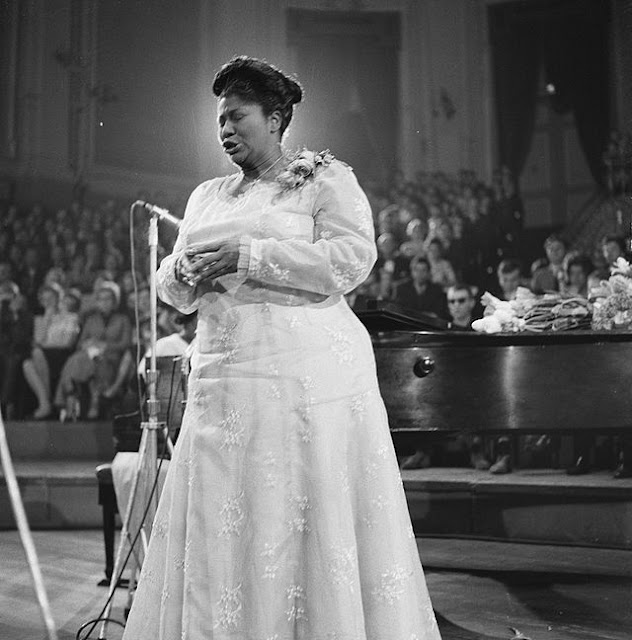10 Things You Should Know About Mahalia Jackson
This article was first published in French at TPSG. It is part of a series in honour of African American history month.
Her four grandparents were born slaves and her parents were unmarried when she was born in 1911. But given that slaves had been denied the right to marry for generations, this was not at all common in her time period.
A preacher’s daughter who grew up in a family deeply devoted to Christ and the Gospel, she began singing in church at the age of 4. Her talents did not go unnoticed from then on.
She had little opportunity to study, and after losing her mother at age 16, she moved to Chicago, where she worked as a domestic helper. She joined the Greater Salem Baptist Church and sang in the choir.
From early on, she developed the conviction that she would only sing gospel music, despite the money to be made singing jazz and blues. “Blues are the songs of despair, but gospel songs are the songs of hope,” she argued. “I hope to bring people to God with my songs.”
At age 26, she met Thomas Dorcey, the composer who coined the phrase “gospel music.” She worked alongside him for 14 years, singing the songs he composed. Initially, she could not make a living solely performing, so she enrolled in a beauty course and opened her own salon. In 1947, she released the single, “Move on Up a Little Higher” which became an international hit, selling eight million copies and launching her as a gospel artist.
Mahalia was so uncompromising in her faith that she refused to sing in nightclubs or in any venue she deemed unsuitable for the message she bore. She also refused to perform before segregated audiences. Numerous musicians approached her about singing blues or jazz with them, from Nat King Cole to Duke Ellington. And while she did perform with many famous musicians of her era, it was always gospel music. When she played at non-religious venues, she did so as a means to share the Gospel with unbelievers.
She and her entourage of singers touring throughout the South of the United States often had trouble finding gas, food, and lodging, due to Jim Crow laws. They would be forced to sleep in her Cadillac, surviving on fruit during the day and driving through the night to avoid the anger of whites upset to see black women driving such a nice car. She had trouble cashing checks outside of Chicago, so she began requiring being paid in cash, often travelling with tens of thousands of dollars on her.
She was the first gospel singer to perform at Carnegie Hall. She eventually had her own radio show and her own television show – a first among African Americans. In 1956, she performed at the Democratic National Convention, and in 1961, she sang the national anthem at John F. Kennedy’s inauguration.
A French jazz fan named Hugues Panassié discovered Jackson's music in the waiting room of her record company. He purchased her records, took them back to France and played them on public radio. The Académie Charles Cros awarded Jackson their Grand Prix du Disque for "I Can Put My Trust in Jesus" (she was the first gospel singer to receive this award). Her subsequent European tour was a remarkable success.
In August 1963, Mahalia joined Martin Luther King, a long-time friend, before a crowd of 250,000 at the Lincoln Memorial in Washington D.C., where she preceded the civil rights leader in song. King rose to speak, seemed to wander in his text, and Mahalia encouraged him, “Tell them about the dream, Martin. Tell them about the dream!” History recounts that he then departed from his notes and launched into his new vision for America as articulated in his legendary speech, “I Have a Dream.”



Comments
Post a Comment